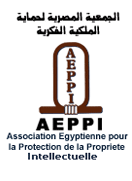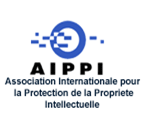|
|
|
|
|
|
|
OPENING SESSION: |
|
The opening speech was delivered by Mrs. Hoda A.Serageldine,
President of the Egyptian Association for the Protection of
Intellectual Property (AEPPI); General Haytham Hamouda, Vice
President of the Internal Trade Development Authority; Mrs.
Eng. Esmat Abdel Latif, President of the Patent Office; H.E.
Ambassador Amgad Abdel Ghaffar, Regional Manager for the
Arab Countries at WIPO.
Mrs. Serageldine pointed out the importance of reviewing the
Intellectual Property Law No. 82 of 2002 in light of the
results of its application over the past years specially in
the fields of patents and trademarks. Regarding the
development in the judicial field, Mrs. Serageldine praised
Dubai’s leading experience in establishing special courts
for intellectual property rights disputes and stressed the
importance of benefiting from this experience. Gen. Hamouda
emphasized the fact that Egypt was one of the leaders among
Arab nations to issue a legislation for protecting
intellectual property rights by issuing the law No. 57 of
1939 for the trademarks in addition to the adaptation of the
Egyptian legislature to international developments
eventually resulting in the issuance the law No. 82 of 2002
as a unified law for protecting the intellectual property
rights. Further, Egypt joined most of the international
treaties on intellectual property.
Mrs. Eng. Esmat Abdel Latif said that the legal protection
encourages the development of human innovations, protects
innovators and creators and contributes to the wheel of
progress and development. She said the Egyptian Patent
Office, in performing its duties and increasing its
efficiency, concludes cooperation and training agreements
with international organizations and advanced research
centers. Consequently, the Egyptian Patent Office has become
one of fourteen offices worldwide to carry out preliminary
examination and international research for applications
submitted in the Arabic language.
Ambassador Abdel Ghaffar discussed the role of the WIPO’s
Regional Office for Arab Countries in the cooperation with
the Arab Countries for identifying their needs in the field
of intellectual property and developing the legal systems
and execution departments therein. He emphasized the
importance of the effective participation of Egypt and the
Arab Countries in international forums in order to protect
their interests and the importance of establishing
technology transfer centers in cooperation with WIPO
following the Tunisian experience.
|
|
FIRST SESSION:
SPEECH OF DR. SAMIR MANSOUR: REGIONAL REPRESENTATIVE OF
THE PHARMACEUTICALS RESEARCH AND MANUFACTURE ASSOCIATION (PHRMA)
(1) Introduction to PhRMA
PhRMA is an American association for the producers of
pharmaceuticals and pharmaceutical researches representing
the largest research and production companies in the world.
The member companies lead the way to new medical discoveries
whereas the PhRMA members invested around USD 45.8 billion
in researches in 2009 which constitutes a large portion of
the pharmaceuticals industry investments which has invested
about USD 65.3 billion on 2009. The main mission of PhRMA is
to generate general policies that encourages discovery of
disease treatments.
(2) Stages of a Pharmaceutical
Dr. Samir Mansour presented the stages which a
pharmaceutical goes through and explained that a small
percentage of the discovered pharmaceuticals proceeds to be
marketed after their discovery whereas only 2.5% of the
latent compounds persist until the registration of patents
and stages before the medical experiments, and only 0.5% of
the latent compounds persist to reach the stages 1,2 and 3
of the medical and bed experiments. Development stages last
from 10 to 12 years until registering the drug which is
almost half the term of protection granted to patents before
offering the pharmaceutical in the market.
(3) Benefits of Research &
Development
During the phase of medical experiments, research and
development have several benefits as they participate in
increasing the investments, labor, skills and knowledge, the
competitiveness capabilities, and in addressing the needs of
the medical care sector. After registration, benefits
include the capability of manufacturing and packaging,
employment of new manpower, training and education regarding
new pharmaceuticals and disease management. After the expiry
of the patent, benefits include commencing the production of
generic drugs, technology transfer and improvement of the
local industry.
(4) Importance of Intellectual
Property in the Pharmaceutical Field
Intellectual property plays a significant role in the
pharmaceutical industry, including: (i) motivating companies
to more research to invent new medical products; (ii)
assisting countries specifically developing ones in the
technology transfer process to help treat diseases; (iii)
developing and innovating more pharmaceuticals for treating
incurable disease such as Aids, tuberculosis and else; and
(iv) fighting counterfeited pharmaceuticals that have
negative impacts on societies and decrease innovation and
prevent societies from benefiting from new innovations.
(5) Protecting Data Submitted to Health
Authorities
During the process of issuing the required licenses for
drugs circulation, companies have to submit detailed data to
the competent health authorities. Such data are subject to
the principal of data protection provided for in the third
paragraph of article 39 of TRIPS. The purpose of such
protection is to prevent the use of data submitted by the
innovator to obtain a marketing license by a third party
unless an approval is obtained from the innovator to protect
the innovator from unfair competition which might negatively
affect the innovation. Therefore, health authorities must
prevent piracy by preventing unauthorized parties from
relying on the data submitted from the innovators to
register counterfeited drugs.
(6) Counterfeiting Drugs and
Effects on Patients and Other Entities
Doubtless, counterfeited drugs have negative effects on
people that might reach death. They also have negative
effects on innovative drugs manufacturers and countries.
Counterfeited drugs are those substances designed and packed
in a way which cannot be distinguished from original drugs
available in the market. In most cases, they are not of the
same quality and do not provide the safety provided by
original drugs as they might contain wrong contents or might
not contain the effective materials.
World Health Organization estimated that between 8% to 10%
of the drugs in the world are counterfeited, a percentage
that increases for some drugs in developing countries to
reach 30%. The annual global sales of counterfeited drugs
reach USD 40 billion.
In order to combat counterfeiting, governmental authorities
and private entities should coordinate their efforts in all
countries, internally and externally. The laws of
intellectual property rights should be enforced strictly. In
addition, awareness campaigns for the effects of using such
drugs, educational and instructive programs for the customs
employees and public order whereas most of the drugs enters
through the borders, adopting deterrent laws against
perpetrators of counterfeit and amending the current laws to
meet the committed crime should be carried out.
Jordan is a role model in combating counterfeited drugs. It
amended its laws to become deterrent, fully applied
intellectual property laws, established specialized courts
in this field, and provided specialized courses for judges
on the dangers of counterfeiting.
|
|
OPEN DISCUSSION
(1) Data Exclusivity
An open discussion was conducted regarding the protection of
technical data submitted to the local authorities by
applicants of licenses which enable the health authorities
undertaking the required examination to ensure the licensing
conditions are met. Dr. Hossam Lotfy clarified the
difference between the different types of data protected by
the intellectual property legislations and international
treaties as follows:
(a) Undisclosed information: are secret
information of a commercial nature, which owner or holder
took reasonable steps for their protection. The protection
is permanent as long as they are not disclosed.
(b) Data Exclusivity: are granted to the
applicant of a patent to him from any third party that might
simultaneously apply for a license to market a
pharmaceutical product. Protection apply only if the health
authorities requested the data. The claimant bears the
burden of proving the leak of date. The duration of
protection is five years commencing from the date of
submitting the data to the competent authorities.
(c) Patents: are granted to new unprecedented
inventions, at anytime and place, which are capable of
industrial application, and conform to public order and
morality. Usually, the protection term is 20 years.
There is no overlap between the two concepts because the
applicant for detailed data protection does not cause any
harm for the patent applicant, but protects a file in which
great respectable efforts have been made.
In this context, it has been suggested to amend article 56
of the Law No. 82 of 2002 so that the Data Exclusivity
protection term (5 years) commences from the date of
licensing the marketing of the pharmaceutical chemical
product or agricultural product and not from the date of
submitting the data to the competent authorities given that
the average time for issuing the license is one year from
the date of submitting the data, during which the applicant
does not benefit from the granted protection.
(2) Article 17 of Law 82 of 2002
The Symposium discussed the importance of reviewing article
17 of Law No. 82 of 2002, and discussed the feasibility of
this article in light of the authorities’ right to object to
the registration of a patent after its publication in
addition to their right to issue compulsory licenses or
dispossess the patent if its conditions are met.
|
|
SECOND SESSION:
SPEECH OF DR. HOSSAM LOTFY, FACULTY OF LAW DIRECTOR, BANI
SWEIF UNIVERSITY
(1) 3-Dimensional Trademarks
Article 67 of Law No. 82 of 2002 does not require that the
trademark subject of registration and protection be
two-dimensional. In fact, most legislations allows the
registration and protection of three-dimensional trademarks.
Therefore, the Trademark Registration Office should accept
applications submitted for the registration of
three-dimensional trademarks.
(2) Geographical Indications
Law No. 82 of 2002 does not stipulate a clear definition for
geographic indications. Indeed, it mixes between three
expressions that are widely used in intellectual property
agreements and legislations in various countries: (a)
indication of origin; (b) appellation of origin; and (c)
indication of source/provenance.
Indications of source/provenance refer to the place of
manufacturing or production and include the production,
extraction, harvesting, packaging and distribution of the
product. Such indications of source/provenance are two types
as follows:
(a) Indication of Origin
Such indication of origin is connected with the actual
process of production and includes the production,
extraction, and harvesting of the product, and is therefore
considered a part of the indication of source/provenance on
a narrow basis.
(b) Appellation of Origin
Appellation of origin denotes the origin of the product, and
depends on the climate, geography and skill that
differentiate the product. Appellation of origin do not
necessarily denote a certain quality of the product,
however, they prescribe the characteristics of the products,
either with respect to the climate and geography surrounding
the product, or with respect to the skill in its production.
Law No. 82 of 2002 misused the term “Appellation of Origin”
to describe the indication of source and the indication of
origin besides the meaning of the appellation of origin set
out above. This caused a serious problem in practice:
Trademark Registration Office personnel could not
differentiate between appellation of origin and the
trademark.
It is worthy to mention that the Egyptian legislator
violated the TRIPS Agreement by not conveying any additional
protection to alcoholic drinks and wines as mentioned in
Article 23 of the Agreement.
(3) Collective Marks & Certification Marks
(a) Collective Marks
A collective mark is different from a trademark. While a
trademark aims to determe the source of the product, a
collective mark is not associated with a particular product,
but may be used by any member belonging to a particular
group, which is the owner of the collective mark.
(b) Certification Marks
The difference between collective marks and certification
marks is that the latter may be used with permission from
its owner after fulfilling the conditions set out by the
owner of the certification mark. It is a common mistake to
denote the certification mark as a quality mark, as it does
not necessarily mean a certain quality, but only clarifies
that its users have fulfilled the conditions set by its
owner.
(4) Branding / Trade Dress
These are not legal terms. They are used to describe the
form in which the product or service is presented to the
public. It may be a patent, a trademark, an appelation of
origin or an industrial design, or not. An example for a
trade dress is the general appearance that McDonanlds is
using all around the world.
(5) Well-Known Marks
The legislator was inaccurate in the use of the term
“well-known marks” in Article 68 of Law No. 82 of 2002,
because the TRIPS agreement requires that that the mark be
“very well-known”. It is therefore recommended to change the
term used to become “very well-known marks”.
In order to benefit from the protection, even if not
registered, well-known marks must be known both globally and
in the Arab Republic of Egypt.
In practice, problems arise in proving the fame of the mark
globally and in Egypt, whether before the Trademark
Registration Office or before courts. The reason behind
those problems is that the fame of a mark is based on
relative standards. In all cases, the defendant must submit
evidence of his mark’s fame, which is deemed a question of
fact that may be proved by all means of proof, and is
subject to the discretion of the court or the registering
authority to protect such mark.
It was noted that WIPO has not set out a clear definition of
a very well-known mark, and in practice it is almost
impossible to develop a comprehensive definition of a very
well-known marks as is evidenced by the TRIPS Agreement’s
inability to do so.
At the end of the session it has been proposed to amend the
terms contained in the law to conform with international
conventions and their purposes. It was also proposed to
issue different registration application forms for different
types of marks that conform to the required conditions for
the registration and protection of each type of mark.
|
|
THIRD SESSION:
SPEECH OF DR. KHALED ATTIA, PARTNER AT SARIE EL DIN &
PARTNERS LAW FIRM AND FORMER EXECUTIVE DIRECTOR OF THE
EGYPTIAN COMPETITION AUTHORITY
Dr. Khaled started his speech with a brief account of
the Egyptian transition to a market economy that
necessitated the promulgation of modern economic
legislations, specifically, the Intellectual Property Rights
Law No. 82 of 2002 that regulates all matters relating to
the protection of intellectual property rights in the
context of the TRIPS Agreement, in addition to the Law on
the Protection of Competition and Prevention of Monopolistic
Practices No. 3 of 2005 (the “Competition Law”) that
regulates the exercise of economic activity in a manner that
does not prevent, restrict or harm free competition. The
integration between the policies of the protection of
intellectual properties on one side and the antitrust
policies on the other side is important to achieve the
common objectives of such laws, and would result in many
benefits to the consumer and the market players, leading to
the advancement of the Egyptian economy. There is an overlap
between the two laws, since Law No. 82 of 2002 contains
several provisions that relate to the protection of
competition such as in the case of as patents, undisclosed
information or other aspects of intellectual property
rights.
The following are various aspects of the illegal practices
identified by the Competition Law, which constitute a
violation of free competition in the market:
1) Hardcore Cartels:
Agreements between persons competing in the market if they
lead to the control of prices or market divisions or change
in the manufacturing processes, distribution, marketing or
coordination with regards to entering into tenders.
2) Vertical Agreements:
Agreements between a person and any of its suppliers or
customers that would restrict competition. Upon examination
of these cases, each case has to be examined seperatley in
order to be able to determine whether the agreement or
contract would restrict competition or not.
3) Abuse of Dominance:
The prohibited acts on each person with a dominant position
in the market, including: acts that would lead to
non-manufacturing, production or distribution of a certain
product for a fixed period or periods, or that would lead to
the exclusive distribution of a specific product, refraining
from entering into sale or purchase deals, or refrain from
producing or providing a product when its production is
economically possible or available, and other forms of
violations.
There are many practical applications of commercial
exploitation of intellectual property rights that could
constitute a violations of the Competition Law, such as the
agreement between the owners of patents and the owners of
trademarks, as an example of horizontal agreements, and
agreements between the owner of a patent or trademark and
the licensee as an example of vertical agreements, and the
imposition of arbitrary conditions for granting a license to
exploit a patent or trademark as a form of abuse of control.
Dr. Khaled presented the legal framework under the TRIPS
Agreement and the supervision it imposes over
non-competitive licenses in contractual licensing agreement
(Article 40 of the TRIPS Agreement). He further presented
procedures in other countries to face monopolistic practices
in the commercial exploitation of intellectual property
rights, such as the procedures set forth in the EU
Regulation No. 240/96, and the competition regulations
contained in the Sherman Act and Clayton Act and the Law of
the Federal Trade Commission on Intellectual Property Rights
in the United States.
One cannot only discuss commercial exploitation of
intellectual property rights without giving attention to the
property right in itself. The owner of the intellectual
property right shall not be considered as a monopolizer or
even in a dominant position unless such is proven through
economic analysis and according to the provisions of the
Competition Law.
In the session’s conclusion, Mr. Ahmed Abou Ali emphasized
the importance of the cooperation and coordination between
the authorities regulating competition and the protection of
intellectual property rights, taking into account the common
objectives of the laws. He further reiterated the importance
of looking at the competition rules contained in both laws
in a complementary way and to create a mechanism for joint
cooperation in the examination of cases of commercial
exploitation of intellectual property rights that result in
monopolistic practices. He also pointed out the importance
of considering the enforcement of the competition provisions
contained in the Intellectual Property Law that relate to
compulsory licensing, in addition to the importance of
enhancing the cooperation between the relevant authorities
to raise awareness of intellectual property rights and
competition policies among dealers in the market. Finally,
Mr. Abou Ali proposed to the audience to consider the
possibility of issuing guidelines to clarify the difference
between exploitation licenses that comply with the laws and
those that are in violation thereto.
Seminar Reporters:
Ms. Farida Mortada – Helmy, Hamza & Partners
Mr. Gamal Abu Ali – Hassouna and Abou Ali Law Firm |
|
|
|
|
|
 |











